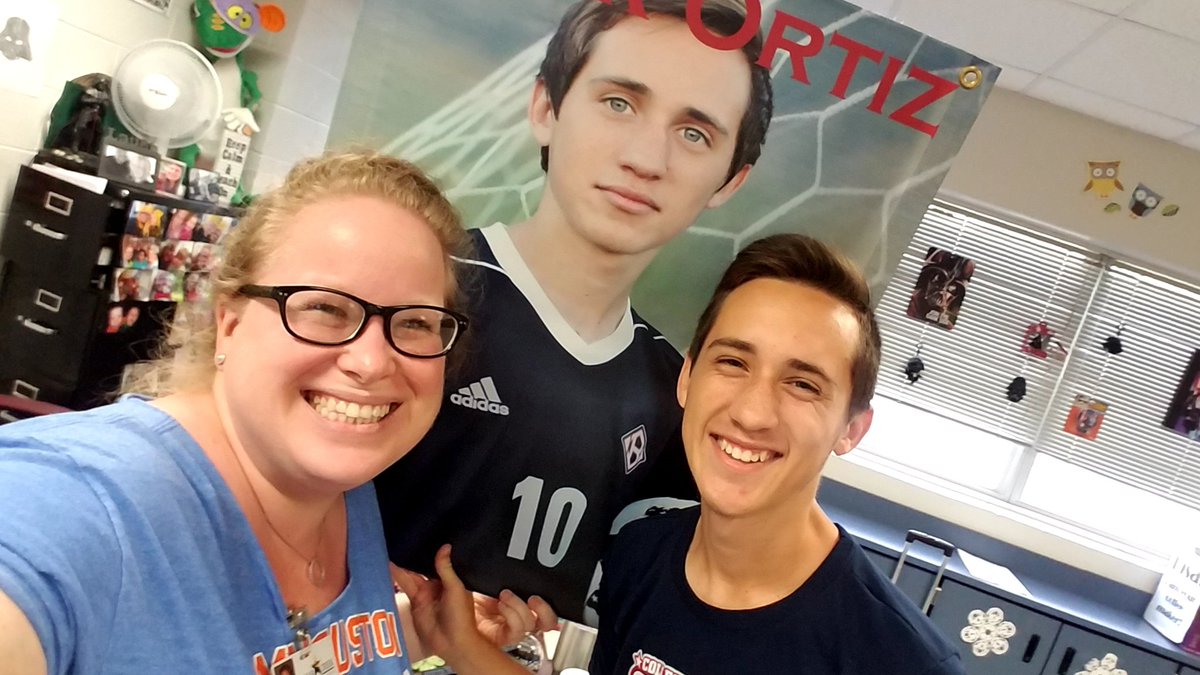So I end up with fabulous decorations like this for my room....

Some of what makes me #thatteacher is my desire to not only have fun myself but find new ways to engage my students. It seems education instruction is a little more boring when you get to high school. And the material often lends itself to a more traditional setting but I've found high schoolers enjoy the gimmicky and fun activities just as much as when they were in elementary. Why shouldn't they be allowed a little cartoony creativity like we used as a teaching tool when they were younger?
Several weeks ago I was contacted by a representative of education.com after coming across my blog. This is my style of teaching. These are the perfect kind of activities to help me engage and motivate my students. Some are short, some are corny looking but the basics and fundamentals of learning come in all packages.
Who wouldn't rather graph on a fun map than plain old graph paper?!?!
Something I have really stressed in recent years to my students is 'you guys have been doing this forever!' It just didn't necessarily look like this, especially with graphing. You still feel like it might be too young looking or do not like the grade level, adapt to fit your needs. Please never let the listed 'grade level' be indicative of the concepts. We graph as Grad Students!
The lesson I was referenced was the Science Project: Parallax*. I also learned what the parallax is and got a quick cross-curricular lesson for my high school math class when we do dilation!
Automatically I was drawn to the simplicity and design. Visually intrigued, it has a natural 'hook' for curiosity. And the best thing about it, it is completely FREE! That's right, education.com has all these activities for FREE. Just sign up for a FREE account and get ready to learn as well as teach. There is nothing better to me as a teacher as saving time and ten fold when it helps save another teacher time and a hundred fold when it is FREE.
This project was created for education.com by Judee Shipman who has published a great deal of lessons for the site. The basic premise of the lesson is as follows:
The parallax is a mathematical construct that is used to measure the distances of faraway objects like the moon and stars. It is defined as the difference between the apparent locations of an object viewed from two different perspectives. For instance, if you view a TV set from five feet to the right of it, and someone else views the same TV set from five feet to the left of it, the parallax would be the angle of perception from directly in front of the TV set. In this project you will make your own calculations using parallax principles.
Problem:
What is the parallax principle?
Materials:
- Computer with Internet access
- Color printer
- Digital camera
- Typical office/hobby/hardware/craft supplies (paper, poster board, glue, etc.).
Procedure
- Read overview of relevant topics (see bibliography below).
- Address all of the terms and research questions mentioned here.
- Search and print out compelling images relevant to your topic.
- Construct and solve your own parallax problems.
- Carefully record all measurements and results.
- Analyze your data.
- Write a detailed report.
- Include graphics, charts and diagrams in your science fair display.
It is set up for a science fair project but as all teachers know, you can get ideas and activities anywhere. Just like our students, we can find inspiration in a number of places and activities. If you are a math teacher and wondering why I'm referencing a science fair project, please see the above statement 😉💓. I find ideas everywhere! I love doing anything to engage my students. And high school math often needs help in motivating and engaging, that is why I love finding new and wonderful sites like education.com. I can not wait to use more from them next year!!
How fun for a basic and necessary concept!
How fun for a basic and necessary concept!
You never know where new ideas will come from, be open minded and remember that high schoolers enjoy the fun they had as younger students. And sometimes, we as teachers do too!
Thank you!
Enjoy!
Lisa
*Disclaimer and Safety Precautions
Education.com provides the Science Fair Project Ideas for informational purposes only. Education.com does not make any guarantee or representation regarding the Science Fair Project Ideas and is not responsible or liable for any loss or damage, directly or indirectly, caused by your use of such information. By accessing the Science Fair Project Ideas, you waive and renounce any claims against Education.com that arise thereof. In addition, your access to Education.com's website and Science Fair Project Ideas is covered by Education.com's Privacy Policy and site Terms of Use, which include limitations on Education.com's liability.
Warning is hereby given that not all Project Ideas are appropriate for all individuals or in all circumstances. Implementation of any Science Project Idea should be undertaken only in appropriate settings and with appropriate parental or other supervision. Reading and following the safety precautions of all materials used in a project is the sole responsibility of each individual. For further information, consult your state's handbook of Science Safety.



No comments:
Post a Comment